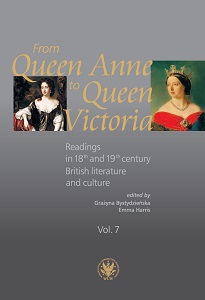The Possible Worlds of Oliphant and Eliot in "Miss Marjoribanks" and "Middlemarch"
The Possible Worlds of Oliphant and Eliot in "Miss Marjoribanks" and "Middlemarch"
Author(s): Ana Clara Birrento
Subject(s): Theoretical Linguistics, Applied Linguistics, Studies of Literature, Philology, History of Art, British Literature
Published by: Wydawnictwa Uniwersytetu Warszawskiego
Keywords: Possible worlds; feminine; representation; cultural landscape; private; public
Summary/Abstract: In the introduction to "Miss Marjoribanks" [1866] 1969, Q. D. Leavis stated that Margaret Oliphant was the missing link between Jane Austen and George Eliot. Lucilla Marjoribanks was, in the critic’s words, the Victorian anti-heroine, insubordinate as far as her relationship to men is concerned, with a voracious appetite, and in opposition to the feminine ideal of a fragile submissive angel. Leavis argued that the novel carries an Oliphant tone in the honesty and realism, in the acknowledgement of the lack of idealism in life, constrained by conventions and prejudices. This is an opinion, I counterargue, that is underpinned by the theory of possible worlds. It was against these conventions and prejudices that George Eliot, wrote "Middlemarch" (1871) a few years later, representing Dorothea Brooke as a young woman both rational and ardent. This article analyses the modes in which the two novelists constructed respectively in "Miss Marjoribanks" and in "Middlemarch", possible worlds for women characters, discussing the relationship between the private and the public issues of culture and society, where Lucilla and Dorothea, living in those possible worlds, try to free themselves from Blake’s “mind-forged” social manacles.
- Page Range: 21-29
- Page Count: 9
- Publication Year: 2021
- Language: English
- Content File-PDF

